 .
. . . |
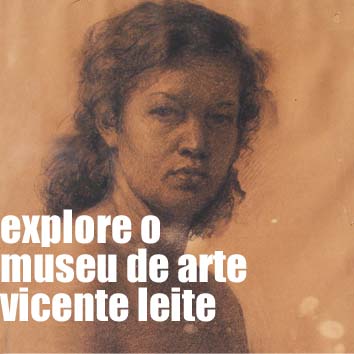 |
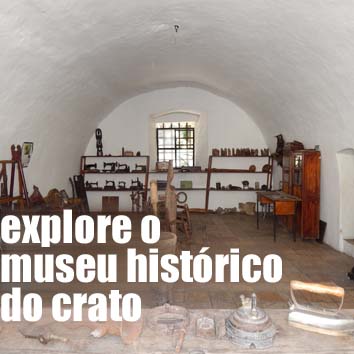 |
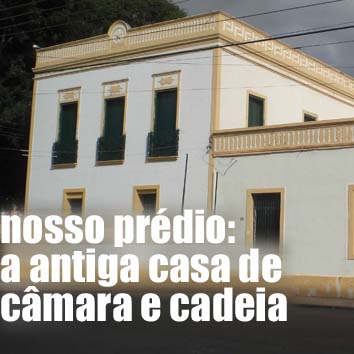 |
|
 |
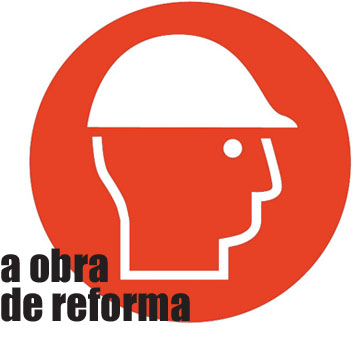 |
Como eu recebi o Museu do Crato em janeiro de 2013 (esquerda) e como deixei o museu (direita):
The pictures on the left show how the museum was handed over to me in january of 2013 ( a complete ruin). On the right what we did to it with just 15 US dollars a week in donations from visitors.
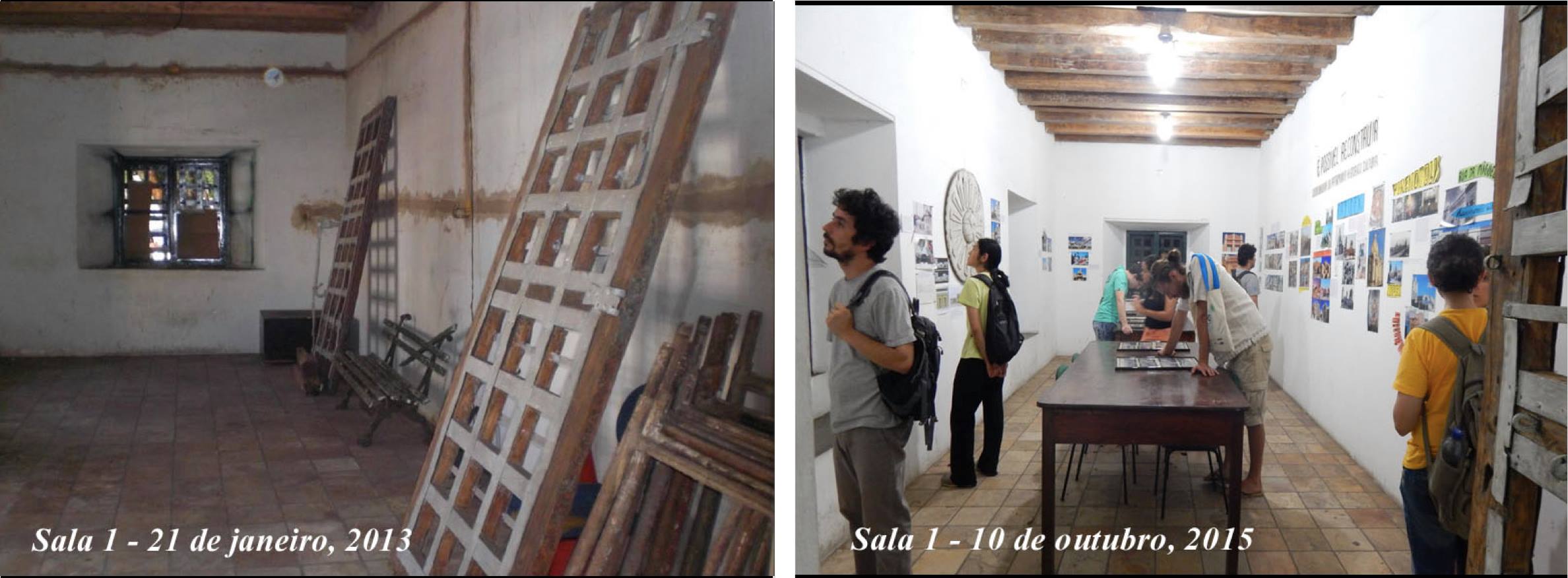
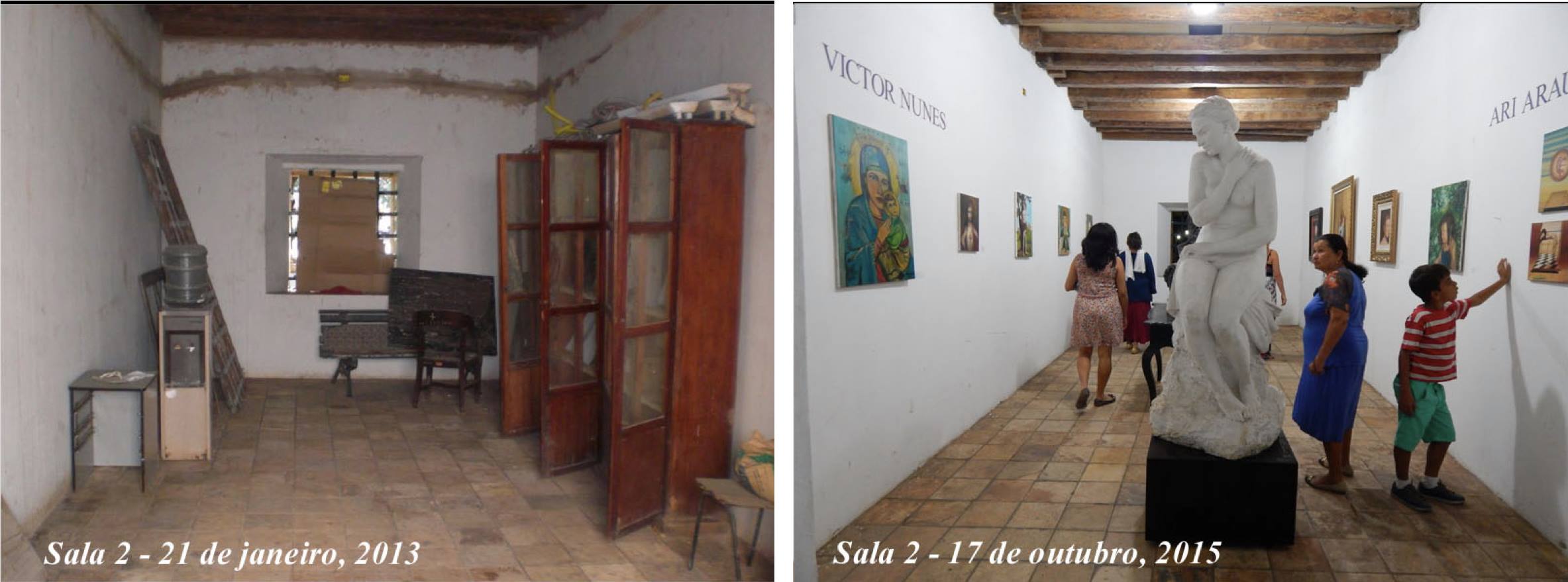
before... / ...after
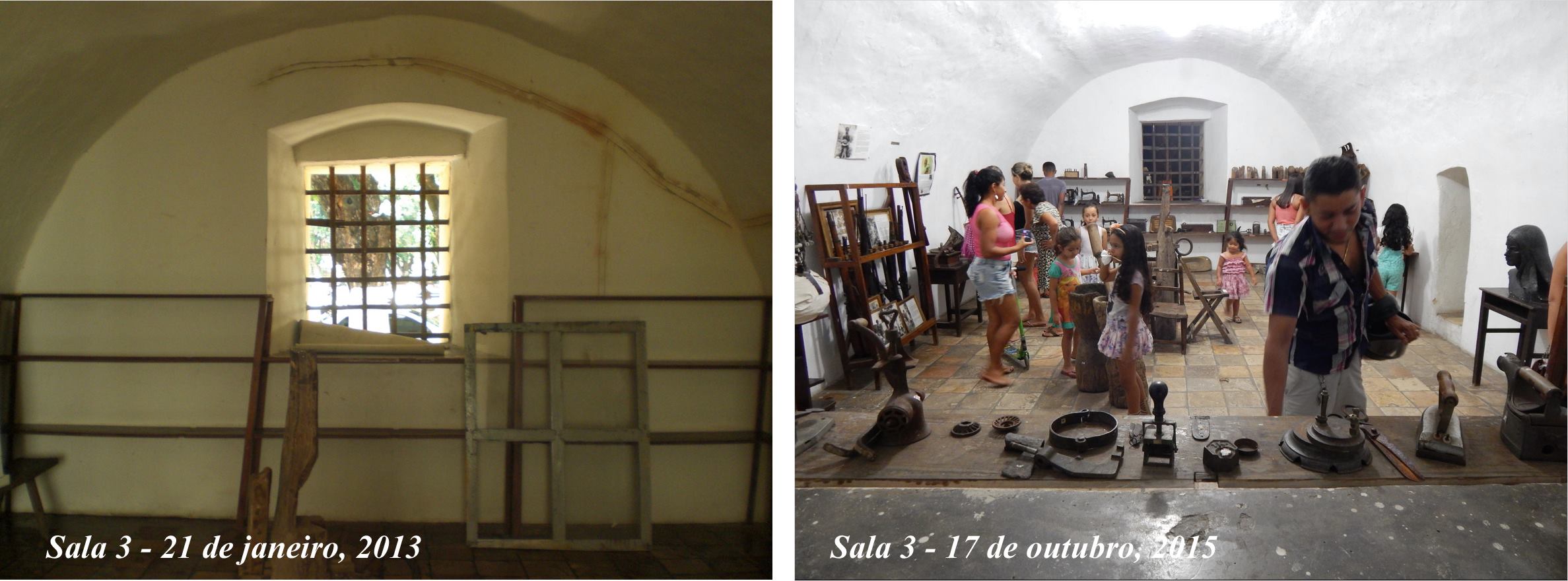
before... / ...after
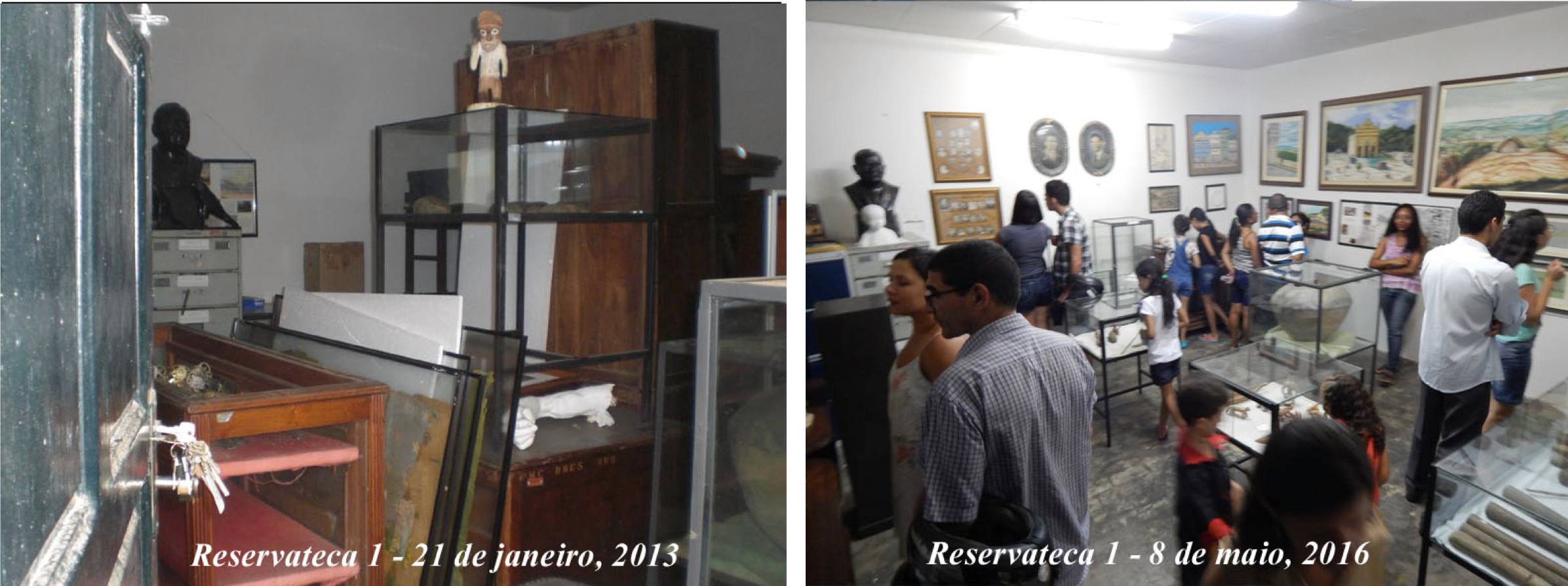
before... / ...after
De dia o museu recebia apenas mais ou menos um visitante por hora. Como a Praça da Sé é cheia de famílias à noite e gente saindo da missa resolvi fazer um teste e abrir à 19hs. O resultado foi que a visitação aumentou radicalmente. Passamos de 8 pessoas durante o dia para 80 à 120 pessoas à noite. Teve uma noite que chegamos a ter 200 pessoas. Resolvi então manter o museu aberto à noite
de outubro de 2015 e agosto de 2016 todas as sextas, sábados e domingos entre 19hs e 21hs. Clique na imagem logo abaixo para ver o movimento à noite. By day the museum received only about one visitor per hour. So I decided to do a test and open at 7:00 pm as people left mass and flood Cathedral Square (where the museum is located. At this time the Square is full of families. The result was that visits increased dramatically. We went from 8 people during the day to 80 to 120 people in just two hours in the evening. One night we had 200 people. I then decided to keep the museum open at evenings from October 2015 to August 2016 every Friday, Saturday and Sunday between 7 pm and 9 pm. Click the image below to see people visiting the museum at night. So that's the trick. Just open the mueum at night. There is this habit here in Brazil of closing museums for the silliest reasons; any remodelling, any difficulties they encounter they just close. They close and wait for grants to come through, for the perfect conditions or the right amount of money to come together to re-open. I believe in opening even if I have to show the difficulties that the museum is experiencing. Life is not perfect. Brazil is not perfect. Especially not now! I believe in exposing any difficulties you may be having... show that you are working hard. Visitors will show solidarity and will want to help. If you close, people have no way to help. And more importantly, the museum will no longer fulfill its function, which is to inspire and create family memories.
|
Plano Museológico do Museu do Crato 2015-2016
Para que o Museu do Crato seja de fato uma instituição pro-ativa na preservação do patrimônio material e imaterial
e engajada com a comunidade, estabelecemos as seguintes metas para 2015 e 2016 em consonância
com as metas da Secretaria de Cultura do Crato e o Estatuto dos Museus, Lei 11.904 de 14 de janeiro de 2009:
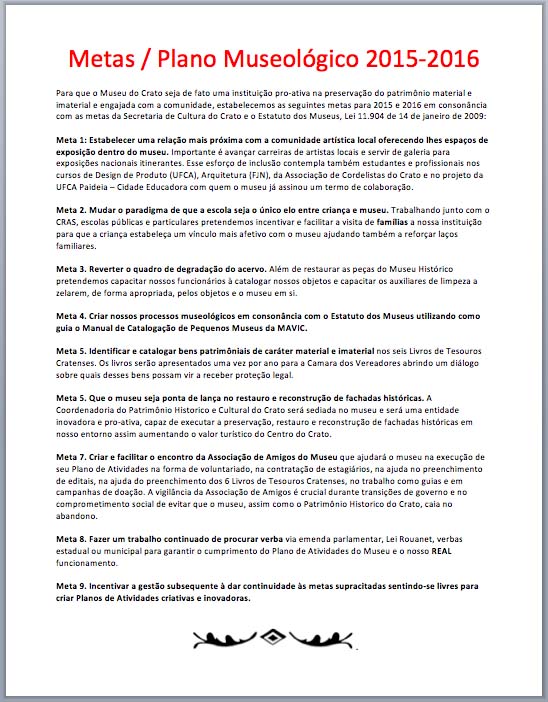 .
.
Plano de Atividades do Museu do Crato e custos para 2015/2016
Relatório de 44 páginas.
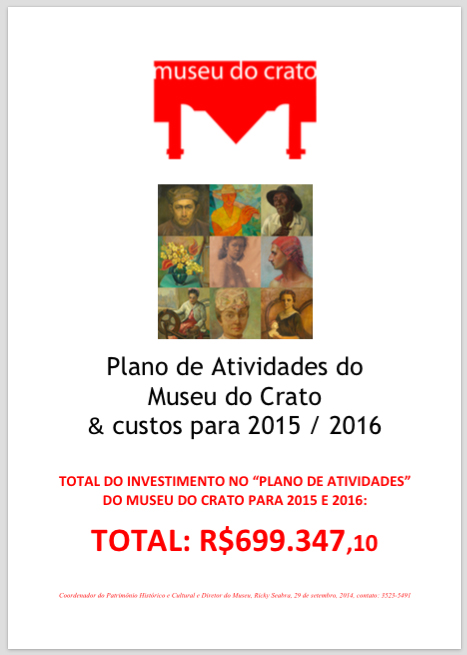
Infelizmente este plano de atividades nunca foi aprovado.
Em defesa do financiamento de um Plano de Atividades: A Nossa Grande Necessidade. (Carta do diretor do Museu) data: xx/xx/xxxx O Museu do Crato ganhou o Edital de Modernização de Museus 2013 do IBRAM. Aguardamos chegar o recurso de 300 mil reias (com 126 mil de contrapartida da Prefeitura) para iniciarmos as obras. (Em 2016, antes de conveniarmos, o dinheiro voltou para os cofres públicos à mando da Presidente da República). Mas de nada adianta inaugurarmos um prédio de Dom Pedro II gloriasamente restaurado com uma qualidade IPHAN se não tivermos verba para ter uma programação artística-cultural DENTRO do prédio. Manutenção é sempre uma questão complicada no Brasil. As máquinas de governos municipais não conseguem dar conta de manter um museu. A lógica da licitação não condiz com a prática de manter um museu. Temos que achar uma maneira de ter a flexibilidade de, por exemplo, entrar num leilão e arrematar obras de Vicente Leite quando um leilão abrir sem aviso. Isso acontecerá em novembro de 2014. Vinte obras do artista renomado e cratense Vicente Leite (cujo nome é o nome de nosso museu de arte) irão à leilão por conta da falência da Oboé Financeira. Infelizmente, é mais do que provável que não teremos condições de participar deste leilão. Precisamos também criar exposições temporárias que atraem turístas e manter uma relação com os visitantes da cidade com novidades. Preciamos ter condições de montar exposições de forma ágil e pagar cachets aos artistas. E precisamos implementar o modelo holandês de zelador em nosso museu. Lá o zelador tem uma oficina dentro do prêdio e ele é um “faz-tudo”, altamente capacitado em marcenaria, serralheria, hidráulico etc para manter o nosso prédio. Também trabalha com pedidos, ofícios, memorandos e orçamentos. Tem que ter computador e saber mexer com WORD e EXCEL. A oficina sempre estará equipada com pregos, parafusos, furadeiras, arame, telhas, cimento, gesso, tinta – o básico para podermos realizar montagens de exposições e manter e consertar o prédio. Uma telha quebrada no telhado do museu não pode esperar 3 meses de processo licitatório para ser trocada resultando em um dano de 800 reais no forro de gesso por conta de chuva (como já nos aconteceu). Está na hora do Crato por em prática o que é ter um museu de verdade. E uma verba de manutenção para programação artística e do prédio em si é essencial e simplesmente a coisa lógica a fazer. Assim poderemos ser de fato uma instituição pro-ativa e engajada com 1. a comunidade artística, 2. com famílias em colaboração com o CRAS incentivando pais a trazerem filhos para o museu, 3. Com o nosso próprio acervo zelando de forma competente pelos objetos, 4. com o patrimônio histórico da cidade especialmente na identificação de tesouros cratenses, e 5. a com a preservação, restauro e reconstrução de fachadas históricas em nosso entorno. In defense of financing The Museum's Activity Plan: Our Greatest Need. (Letter from the Museum director Ricky Seabra) date: 09 / 09 / 2014 The Museum of Crato won the public bid for a Federal grant: Modernization of Museums 2013 of IBRAM. We expect to receive f 300 thousand reias (of which 126 thousand will have to come from the Municipality of Crato) in order to start the remodeling of the museum which had been severly damaged after a refurbishing job that had been abandonded by the previous administration. But it's no use really restoring the musem if we won't have a budget to maintain an artistic-cultural program INSIDE the building. Maintenance is always a complicated issue in Brazil. The public bidding logic is not consistent with the practice of maintaining a museum. We have to find a way to have the flexibility, for example, to participate in auctions like the one that will take place this coming November 2014 in which twenty works by the renowned artist Vicente Leite (after which our museum is named) will go on auction due to the bankruptcy of Oboe Finance. Unfortunately, it is more than likely that we will not be able to participate in this auction. We also need to create temporary exhibitions that attract tourists and maintain a relationship with the city's visitors with new content. We need to be able to set up exhibitions in an agile manner and pay artistic fees to participating artists. And we need to implement the Dutch model of house-keeper in our museum. There, the house-keeper has a workshop inside the building and he or she is a "handyman", highly skilled in carpentry, locksmithing, hydraulics, electricity, painting etc to maintain our building. He or she must also work with requests, memos and budgets. They should have a computer and know how to operate WORD and EXCEL. Their workshop will always be equipped with generic necessities like nails, screws, drills, wire, roof tiles, cement, plaster, paint - the basics for mounting exhibition and maintaining and repairing the building. The museum cannot wait 3 months for a broken tile on the roof to be replaced because the municpality centralizes all public bids to hire a contrator. As we have already experienced with this slow process what could have been solved with just 30 reais turned into water damage costing us 800 reais. It's time for Crato to put into practice what it's like to have a real museum. And a maintenance budget for artistic programming and the building itself is essential and simply the logical thing to do. Therefore, we can become a dynamic and proactive institution with 1. the artistic community, 2. with families encouraging parents to bring children to the museum, 3. with our own collection to catalogue and care for objects , 4. with the historical heritage of the city especially in the identification registration of local treasures, and 5. with the preservation, restoration and reconstruction of historical façades in our surroundings.
|
Museu do Crato, Museu de Arte Vicente Leite, Museu Histórico do Crato fica na Rua Senador Pompeu 502, Centro, Crato CEP: 63.100-000,
Atualmente o museu está aberta apenas pela parte da tarde de segunda a sexta.